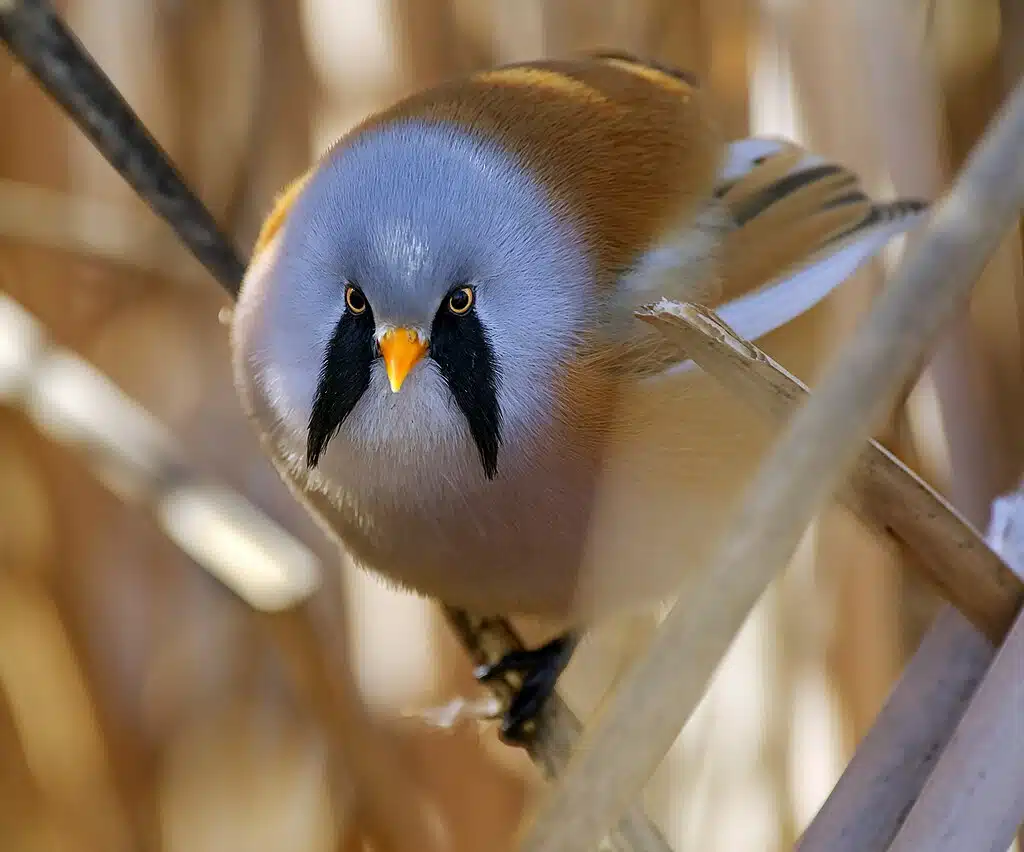Have you ever wondered what is the world’s roundest bird? Well, we have! Meet the Bearded Reedling, a distinctive-looking yet elusive avian species.
Physical Attributes of the Bearded Reedling
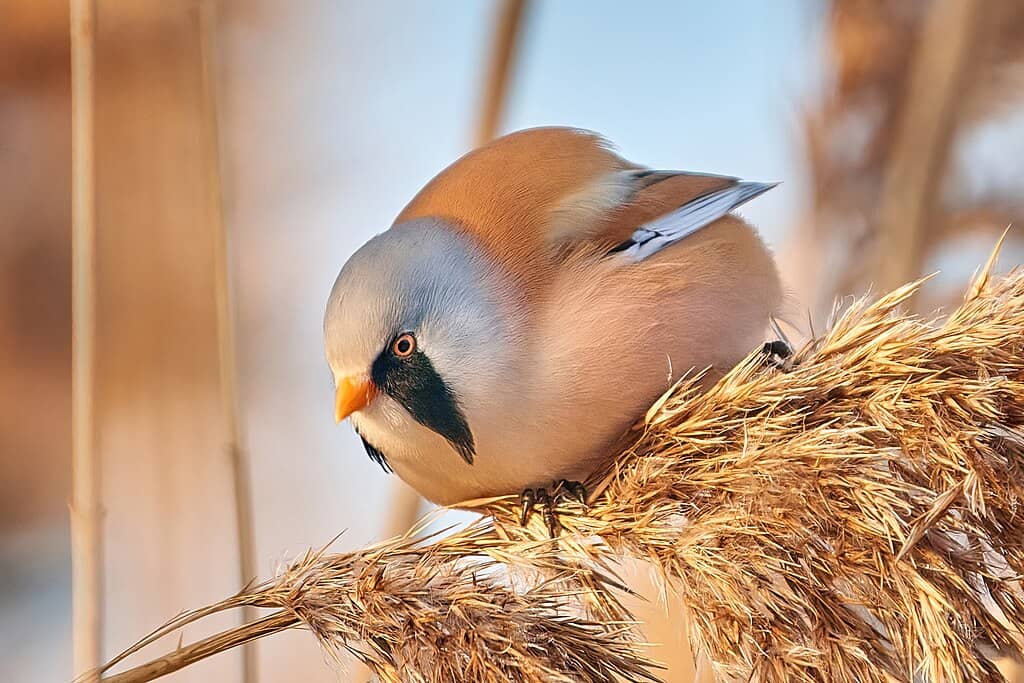
Despite its name, the Bearded Reedling – also known as the bearded tit – does not have a beard. It rocks a mustache instead! The males, who wear their bold black mustaches proudly, have striking yellow eyes and bills, a powder-blue head, and a chestnut brown body with orange feathers in between. In true bird fashion, the female bearded reedling is much less flamboyant. She refuses to grow a black mustache. She has a dull chestnut brown head, and her face and crown are a mixture of darker and lighter brown feathers. On her chin, sides of her neck, and throat she has light grey feathers compared to the grey-blue color the male wears. However, the females sport the same distinctive yellow eyes and bills as the males. And both genders possess a long slender tail – a notable characteristic of the species.
Here are some other quick facts on the rounded, plump-bodied Bearded Reedling:
| Scientific Name | Panurus biarmicus |
| Height | Ranges between 4.9 to 5.7 inches |
| Weight | Ranges between 0.4 to 0.8 ounces |
| Wingspan | Ranges between 6.3 to 7.1 inches |
| Life expectancy | Ranges between 2 to 3 years |
Habitat and Distribution
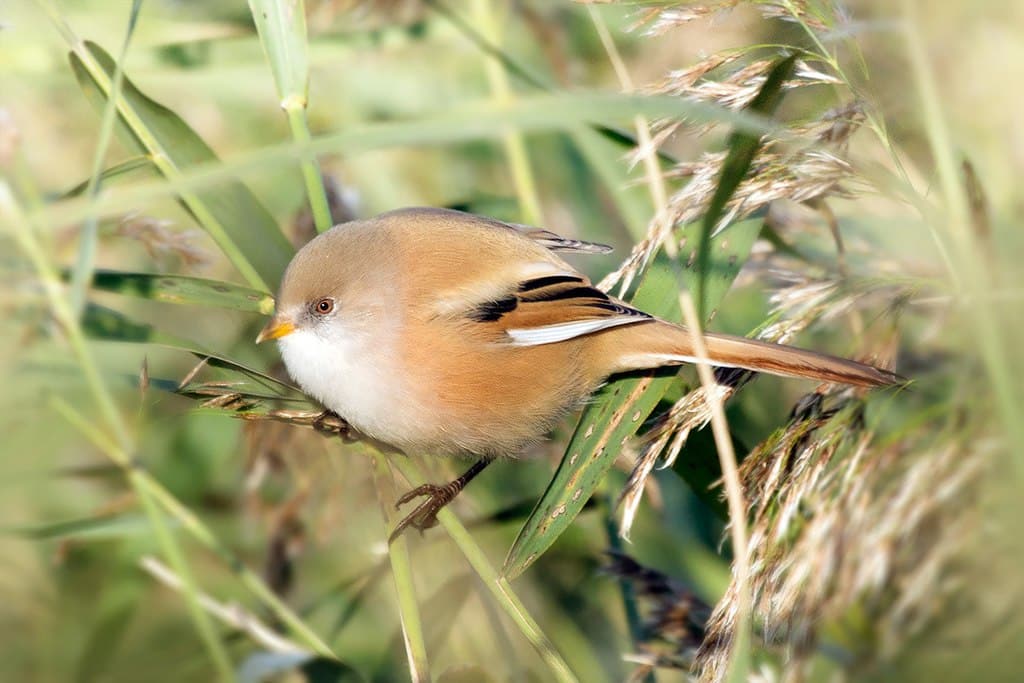
These cute little round birds make their home in areas with dense vegetation, such as reed beds, wetlands, and marshes. Bearded Reedlings camouflage themselves in rushes and reeds on the edges of swamps and marshes, as well as in wetlands next to both fresh and brackish water. Areas they are found are Europe, the UK, Russia, and China.
Diet
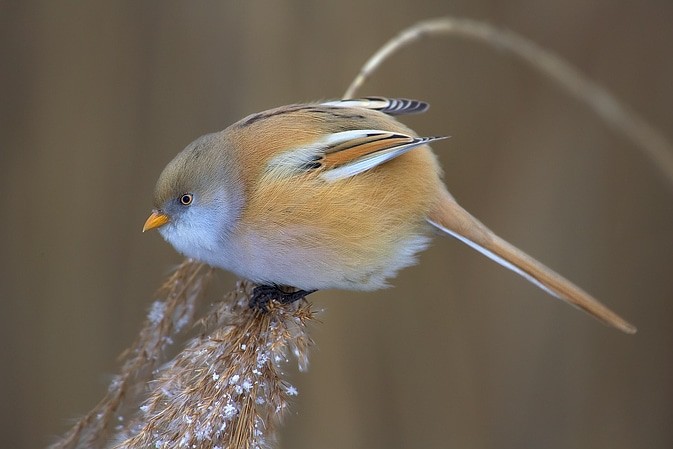
Bearded Reedlings adapt their diet seasonally. In summer time they forage muddy wetland shores and edges for invertebrates which they catch with their long, slender bills. During these months their diet mainly consists of moths, beetles, mayflies, dragonflies, mosquitoes, and their larvae. At times they will even add snails, slugs, and spiders to their diet!
In the cooler winter months, Bearded Reedlings opt for a more plant-based diet compared to their summer diets of invertebrates and insects. During these months they will eat seeds from grasses, willowherb, nettles, rushes, and sedges.
These birds are known for their acrobatic foraging techniques, often seen hanging upside down to grab insects from the underside of reed leaves!
Breeding Behaviour and Nesting
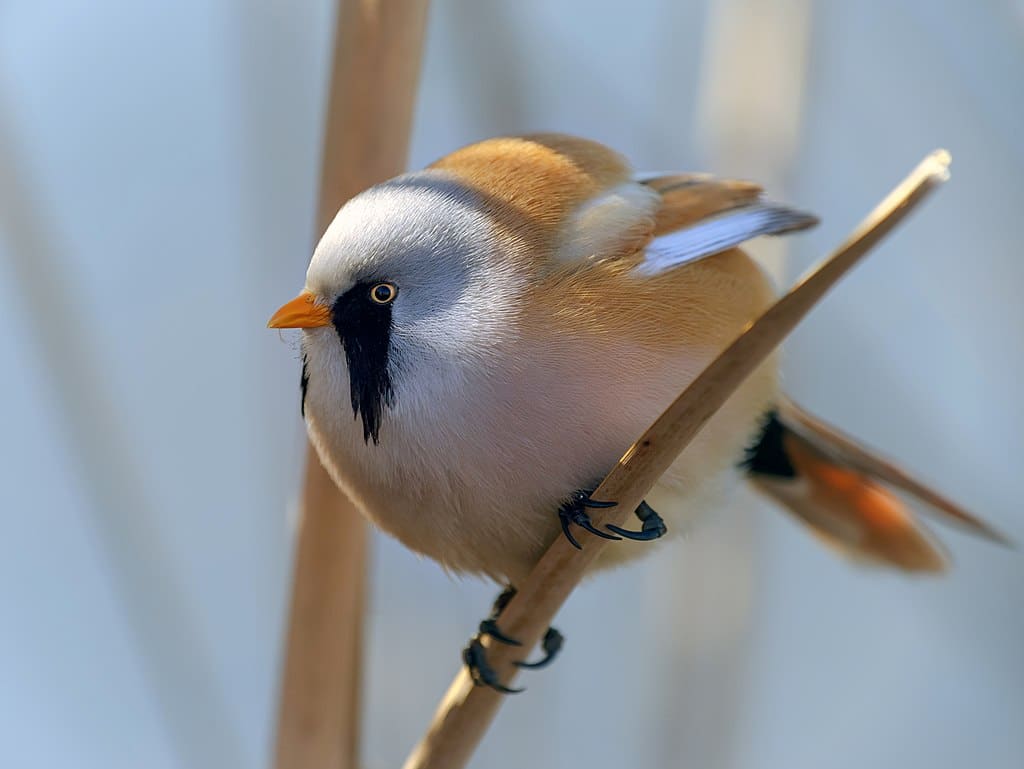
Bearded Reedlings form monogamous pairs during the breeding season, which typically stretches from March to September. If the initial season of a breeding pair is successful they tend to mate for life. However, it is not uncommon for a female to mate with more than one male.
At the start of the breeding season in March, as old breeding pairs rekindle and new pairs form. The pairs start building their deep-cup-shaped nests together. They build these nests close to the water level (elevated between 2 and 28 inches) in wetland marshes.
Bearded Reedlings can raise as many as four broods in a single breeding season. After mating, the female lays a clutch of eggs which is incubated for 10 to 13 days – a responsibility shared by both parents. Hatched young bearded reedlings are ready to leave the nest between the ages of 12 and 16 days. But still rely on their parents for another two weeks. The breeding season is complete when the last brood has become independent from their parents, normally around September.
Songs and Calls of the Bearded Reedling
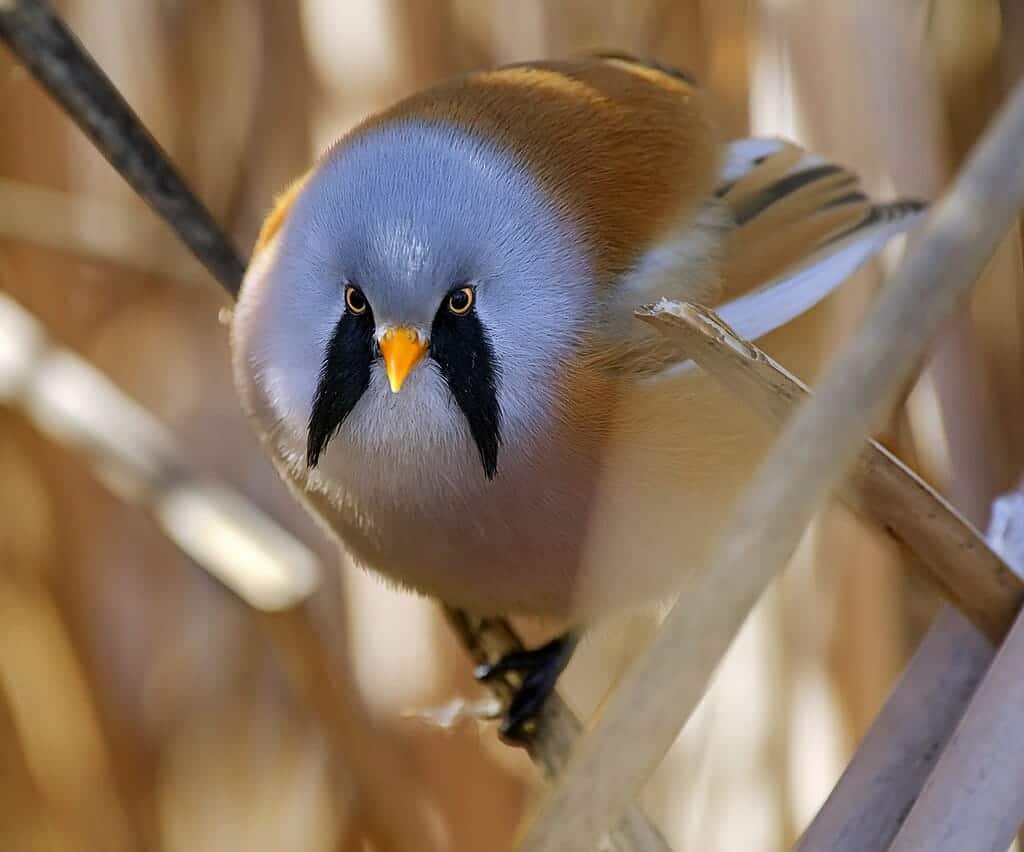
While these are inconspicuous birds, their calls are often the first hint that there is a Bearded Reedling close by. They use their soft and tinkling, yet distinctive “ping” calls to communicate with the flock, maintain social bonds, and coordinate activities.
Seasonal Movements
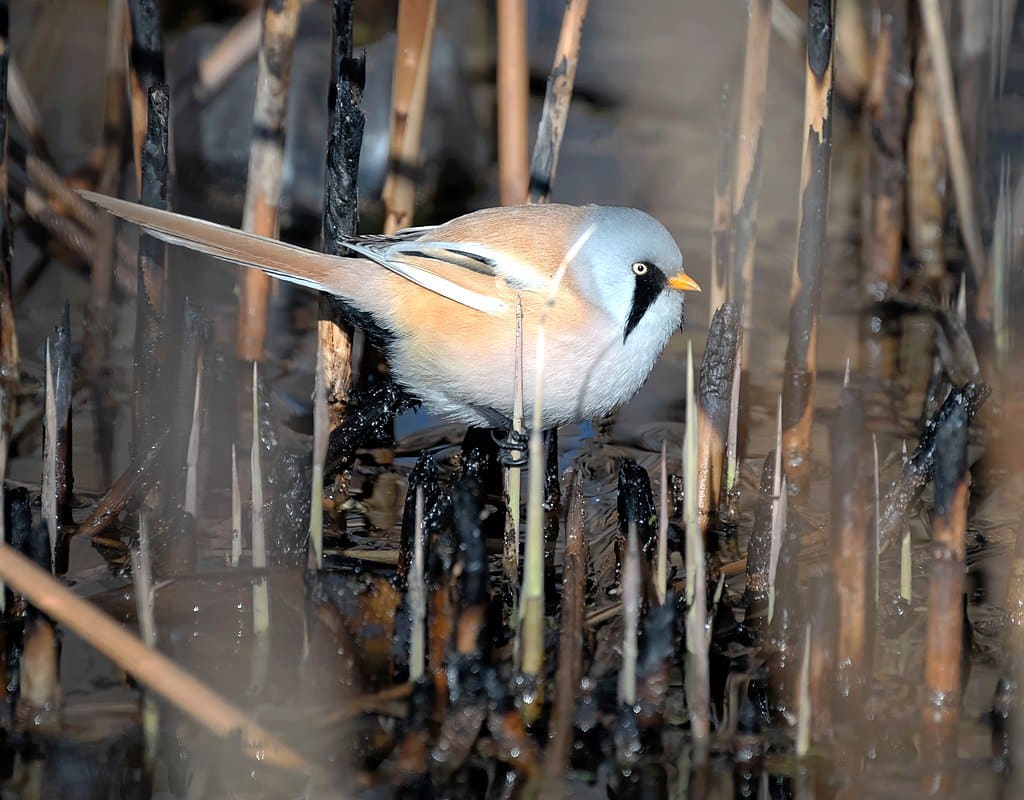
Bearded Reedlings are a sedentary species, meaning they do not generally migrate to other territories as the seasons change. However, in cases of extreme winter temperature changes some irregular short-distance migrations have been observed. Returning to their original home in time for their breeding season.
Conservation Status
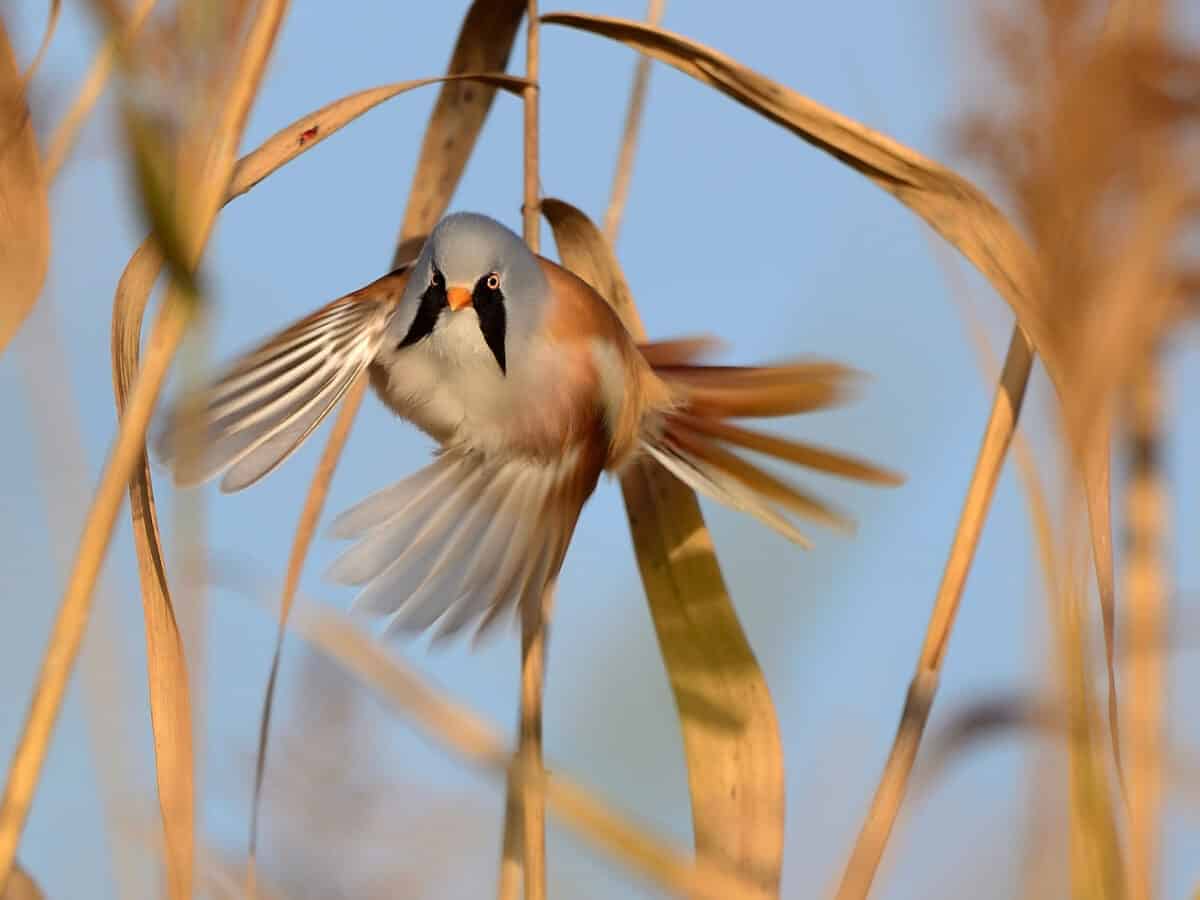
Bearded Reedlings are globally classified as a species of ‘least concern’ to extinction. However, the increased habitat loss due to agriculture and urbanization could become a future threat to these round birds. They are also registered as Schedule I birds, meaning that it is not allowed to interfere with their nesting spots, eggs, or young. Nor to kill, injure, or capture them.
Final Thoughts on the Roundest Birds
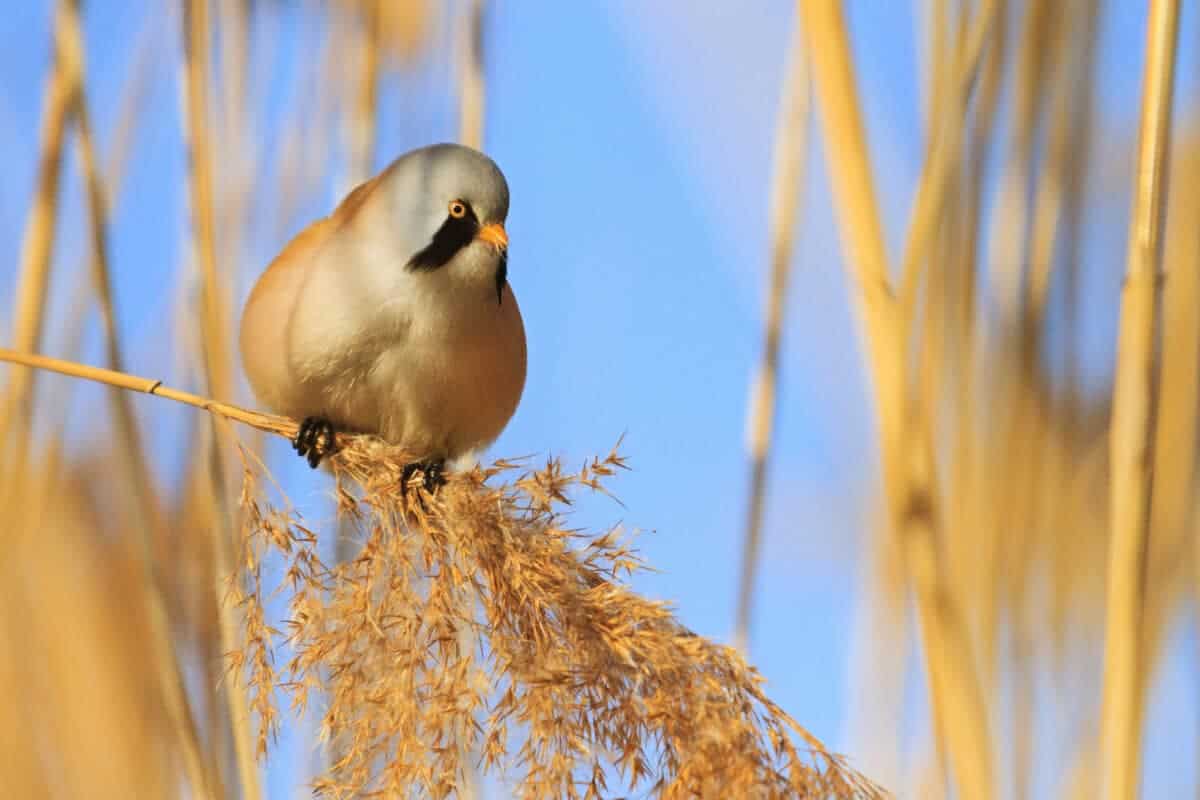
These round, plump-bodied birds have captured the attention of many bird researchers and enthusiasts alike. But who wouldn’t be intrigued by their striking physical attributes, agile foraging techniques, and distinctive “ping” call?
You might also enjoy these articles:
- The World’s Most Dangerous Bird
- Nature’s True Masters of the Air
- WATCH: Meerkat Mob vs Cobra – Who Are You Betting On?
- WATCH: Icelandic Horses Type Out-of-Office Emails
- Watch As Dogs Conduct An Orchestra – With Their Tails - April 24, 2024
- Rescue Puppy Becomes A Style Icon - April 23, 2024
- Proof That The Cat Distribution Theory Is Real - April 22, 2024

